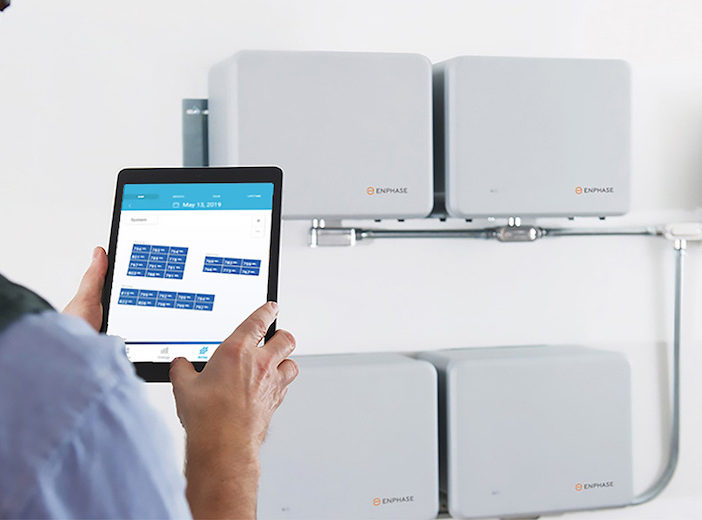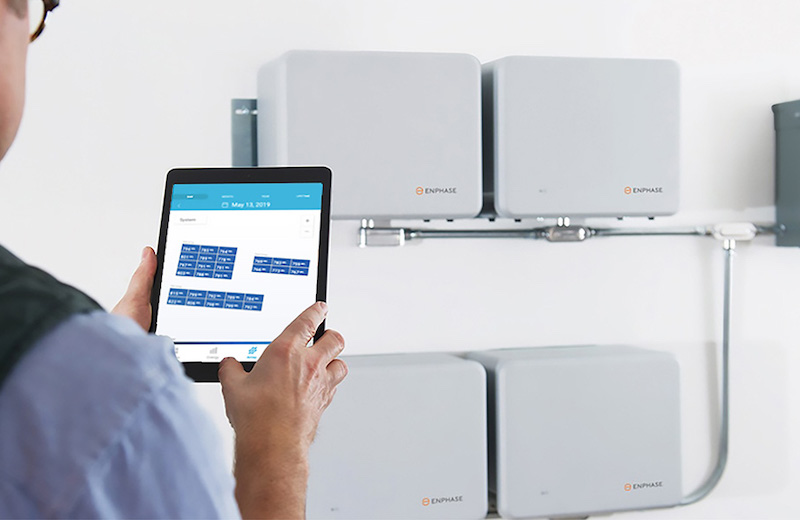
Australian energy tech company GreenSync has notched up a win for its solar trading platform in Australia, with a deal to integrate the technology – and customers – of US battery and micro-inverter maker Enphase Energy.
GreenSync said on Wednesday that the deal would allow Enphase customers join the Decentralised Energy Exchange – or deX that the Melbourne-based company opened for business in October 2018, as a potentially game-changing trading platform for distributed energy resources.
The deX – which has been supported throughout its development by ARENA, and has the backing of major industry players including AGL Energy, EnergyAustralia, SA PowerNetworks and ActewAGL – is designed to connect and coordinate millions of distributed energy resources.
In Australia, the immediate focus is the country’s millions of solar rooftops, and meeting the challenges of the rapid penetration of residential solar on the National Electricity Market.
GreenSync said the deal with Enphase will allow the US-based company’s customers to participate in grid services, to more effectively balance the supply and demand of electricity and enabling the continued growth of distributed solar on increasingly constrained networks.
And already the collaboration is bearing fruit. A two-week pilot across South Australia attracted a 20 per cent participation rate, which is not bad for an opt-in program with no immediate incentive, other than the satisfaction of being part of cutting edge grid technology.
“We are really knocked off our chair about how much uptake there has been,” said GreenSync’s head of customers, Bruce Thompson on Wednesday.
“For the last year, we’ve had our head down building real production software, using key projects with SAPN, and in the UK and in New Zealand with Wellington Electricity, to really establish the foundations of that platform.
“What we’re now doing is registering real devices.”
During the pilot, Enphase customers who opted connected to the deX enabled near-instant visibility of their solar and/or solar and storage systems for their corresponding grid operator, while also creating a path to participate in future grid services.
In time, says GreenSync, those customers will have the opportunity to get more value from their energy assets, while supporting their local community and the overall electricity system.
Enphase has also been encouraged by the response of its customers, whose participation in the deX will help to remove current barriers to distributed solar growth, such as zero export limits, and systems tripping from high voltage issues.
“Enphase customers want to be part of the solution here in Australia, and we have the smart technology to make this possible,” said Wilf Johnston, Enphase’s managing director of the Asia-Pacific region.
“By working with deX, we can provide data and behavioural insights that Australian grid operators need right now to meet the challenges of the rapid penetration of residential rooftop solar.
“Not only are we delivering even greater value to Enphase system owners by improving their return on investment, we are also contributing to a smarter, better managed electricity grid,” Johnston said.
“This is a win for all stakeholders and the broader community as we seek to better support the growth of residential rooftop solar resources in Australia.”
For GreenSync – which is also rolling out cutting edge grid management projects in the UK and New Zealand, the latter with a focus on vehicle-to-grid capabilities – the deal with Enphase is further proof that it is headed in the right direction, even if Australian policy and regulations aren’t quite there yet.
“The announcement with Enphase exemplifies that there is not just the tech available, but the tech vendors available to solve problems here, today, without shutting out consumer,” Grant told One Step Off The Grid.
“The fundamentals, that leadership is happening from tech and other businesses at the moment. We need to, and we are, taking the steps to get things set up.
“There’s a number of options and pathways, but the fundamentals of the tech are there today to get live visibility and coordination of DER, and this shows consumers are up for it. Customers want to be a part of that solution.”

Sophie is editor of One Step Off The Grid and deputy editor of its sister site, Renew Economy. Sophie has been writing about clean energy for more than a decade.

